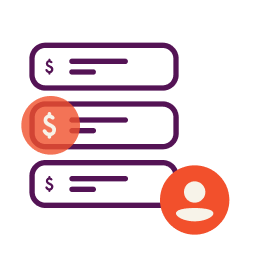Advertiser & Editorial Disclosure
A revolving line of credit can be a valuable tool for any small business. Whether you need cash to improve working capital, purchase inventory, or for something else entirely, a revolving line of credit can help your company access the money it needs quickly.
Keep reading to learn more about how a revolving credit line option might help your small business. We’ll also review some of the best revolving lines of credit for businesses and discuss why it’s a good idea to open a revolving line of credit before your company needs it.
How Does a Revolving Line of Credit Work?
A revolving line of credit is a flexible way to borrow money not just once, but over and over again. Some revolving lines of credit are unsecured and others may require you to put up collateral to secure a credit account for your business.
Here’s how a revolving line of credit works:
You Have a Credit Limit
Unlike an installment loan, such as business or personal loan, a revolving line of credit is issued with a maximum amount you’re allowed to borrow. This is known as the credit limit, a term you’re likely familiar with if you carry a credit card.
Monthly Payments and Interest Fees Can Fluctuate
Unlike a small business loan, because you only make payments on a revolving line of credit when your business makes a draw from the account, the amount of your periodic payment will fluctuate. Interest is usually charged only when you use the account. (It’s worth mentioning that some lenders may charge a monthly maintenance fee even if you don’t use the line of credit during a billing cycle.) This is different than installment debt where you have a fixed payments and interest charges due each month.
You Can Borrow Repeatedly on a Single Account
An attractive feature of a revolving line of credit is the borrowing flexibility it offers your business. As long as you manage the account well and make your payments on time, you’re usually free to borrow repeatedly up to the credit limit on your account, repay the balance, and borrow again during the term of the business credit line.
Revolving Credit Examples
As mentioned, a revolving credit account is a type of financing where you have access to a predetermined amount of money (aka a credit limit). Typically you’ll have to make at least a minimum payment each month (sometimes each week) according to the repayment terms spelled out in your revolving credit agreement. Provided you repay as agreed, the lender allows you to continue to access your available credit as needed, as long as your account remains open and in good standing.
Below are a few examples of revolving credit accounts.
The Best Revolving Line of Credit for Business
Fundbox: Best for Startups
If you have a new business that’s searching for a line of credit, Fundbox may have a solution that can help. A traditional financial institution, like a bank or credit union, will often want a borrower to be in business for at least two years to qualify for a line of credit. By contrast, Fundbox only requires a minimum of three months in business to be eligible for funding.
Qualification Requirements:
- Minimum Credit Score: None required
- Time in Business: Three Months
- Business Revenue: At least $50,000 per year
Fundbox only offers a short-term repayment schedule of 12 or 24 weeks. As a result, your weekly repayment amounts could be rather large, depending on how much you borrow. ($50,000 is the maximum initial draw allowed.) Additionally, the APR on a Fundbox line of credit can range from around 10% to 68%.
Line of Credit by Fundbox
LendSpark: Best for Established Businesses
LendSpark offers an affordable revolving line of credit that may be a good fit for businesses which have been around for a couple of years or more. Qualified businesses can borrow up to half a million dollars through LendSpark, also serving as a solution for companies who need access to larger amounts of cash.
Qualification Requirements:
- Annual Revenue: $250,000 or more
- Time in Business: At least two years
- Credit Requirements: No bankruptcies in the last 5 years and a maximum of three UCC filings.
If your business qualifies for a line of credit with LendSpark, your APR may range between 10% to 30%. An additional 1% to 4% origination fee may be added onto the cost of financing.
Opening a Revolving Line of Credit Before You Need It
As a small business, there will likely be times when your company needs quick access to cash. Naturally a business credit card can help with some expenses, but it may not be the best choice for every situation.
When your business needs funds in a hurry, it may not be the best time to research financing options for the first time. Instead of taking your time to rate shop, you may feel pressured to pass over more affordable choices and focus on speedier funding selections. It’s understandable that you may have to choose a faster (albeit pricier) funding option in a financial emergency, but with a little advance planning it’s also a situation you might be able to avoid.
An alternative approach is to take a more strategic approach to borrowing and apply for a revolving line of credit before you business needs to borrow money. That way you’ll have access to cash when you need it and only pay interest on what you actually use. You can also work to establish better credit in advance, building an asset your company can rely upon if it needs to borrow in the future.
Bottom Line
Roughly one-third of startups fail because the owners run out of money. This stat only underscores the importance of finding the right kind of financing to keep your business healthy and thriving. Remember that regardless of the type of funding, the best time for your business to secure extra cash reserves is before you need them.
If a revolving line of credit doesn’t sound right for you, Nav can help you find the best business loans for your business and circumstances. Additionally, one of the most underestimated forms of business credit is trade credit. Here is a list of list of easy approval Net-30 vendors, if you are unsure about where to start establishing business trade accounts.
This article was originally written on August 21, 2019 and updated on March 23, 2023.



I would like More information